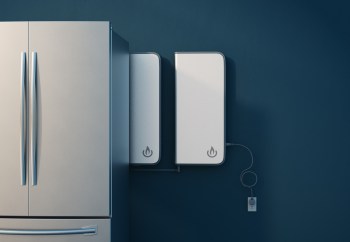As more evidence comes to light about the dangers of gas stoves, a new study finds that people living in smaller homes are at the greatest risk.
What's happening?
A recent Stanford University study discovered that nitrogen dioxide — an invisible air pollutant produced from gas stoves — is particularly harmful to people living in houses smaller than 800 square feet, per The New York Times.
The research uncovered a concerning fact: Residents in modest-sized homes are subject to four times more long-term nitrogen dioxide pollution than owners of homes that are 3,000 square feet or larger.
American Indian and Alaska Native households are exposed to 60% more NO2 than the national average, while Black and Latino residents breathe in 20% more nitrogen dioxide pollution, per the study.
What's more, researchers said that short-term NO2 exposure from gas stoves across the United States is often higher than the safe limits set by the Environmental Protection Agency and the World Health Organization.
In the longer term, someone living in a smaller home with a gas stove could be exposed to 75% of the WHO's benchmark for nitrogen dioxide.
Watch now: Lime executive reveals true impact sustainable choices have had on business
"We've done a really good job in this country of reducing outdoor pollution," Rob Jackson, an earth system science professor at Stanford and a lead investigator on the study, told the Times. "But we've ignored the risks that people face indoors. And that's the air that we're breathing most of the time."
Why is nitrogen dioxide exposure concerning?
Whether in the short or long term, breathing in nitrogen dioxide can cause numerous health problems, including lung inflammation, coughing and wheezing, and an increased risk of asthma attacks, according to the American Lung Association. In fact, the Stanford researchers said that prolonged exposure to nitrogen dioxide has likely caused around 50,000 cases of childhood asthma to date.
"There really is no safe amount of exposure to these toxicants produced by gas or propane, or any fossil fuel, outside or inside," Kari Nadeau, the Department of Environmental Health chair at the Harvard T.H. Chan School of Public Health, told the Times.
Nitrogen dioxide may also negatively impact the environment by contributing to smog and acid rain, the latter of which can harm vegetation and waterways, as the EPA explained.
TCD Picks » Upway Spotlight
💡Upway makes it easy to find discounts of up to 60% on premium e-bike brands
In addition, while NO2 itself is not a heat-trapping gas like carbon dioxide, it indirectly contributes to planetary warming because it interacts with other chemicals to form ground-level ozone, a "powerful greenhouse gas," according to the Climate and Clean Air Coalition.
What's being done about NO2 pollution from gas stoves?
According to the Times, over 140 cities and local governments have called for policies to ban gas hookups in new buildings in the last several years. Los Angeles is one of those cities, and officials say the move will help significantly with LA's persistent smog problem. Last year, New York became the first U.S. state to outlaw natural gas stoves and furnaces in the majority of new construction.
Meanwhile, the Inflation Reduction Act is making it easier for homeowners to install induction stoves, which are powered by electricity and don't release harmful air pollution. In addition to the energy savings they offer, you could get a tax rebate of up to $840.
However, if you're not in the market for a new stove, you can take steps to protect yourself from poor air quality caused by a gas stove. Remember to use the range hood while cooking, open windows, or turn on fans to increase ventilation. You can also buy an air purifier to remove harmful pollutants and keep your family safe.
Join our free newsletter for weekly updates on the coolest innovations improving our lives and saving our planet.














